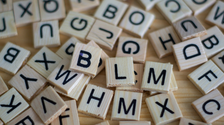Pinyin is a pronunciation system used to help people learn Chinese. It was published officially by the State Language Commission of China in 1958. It is commonly used in China, Singapore, and Malaysia for people who learn Chinese both as a first and second language.
Pinyin is a very useful tool to use in learning Chinese. Yet, over my years of experience teaching, I have realized that there are some difficult and puzzling issues relating to Pinyin which always cause problems for students who learn Chinese as a second language. I believe it is helpful for Chinese language learners to understand these puzzling issues on Pinyin. As it is helpful for them to master their pronunciation of the Chinese language in a more efficient way.
1. Pinyin is an efficient tool to learn Chinese but not a language in itself
The Chinese language is an ideographic language. This means that you might be able to guess the meaning of a character just by looking at it, yet it’s quite impossible to tell the pronunciation.
For example: This is a picture representing the progression of the Chinese character 马 (mǎ) over different periods of time in history.
The first 马 (mǎ) character originated from around 3,500 years old. If you turn it 90 degrees counterclockwise, it looks like a picture of a horse. The character on the far right is the modern character 马 (mǎ) which is being used now. You might be able to guess that this character means horse by looking at it, but you would not know how to pronounce it as ‘mǎ’. A phonetic notation is needed in order to know the pronunciation.
Therefore, after decades of work by many phonologists and linguists, the State Language Commission of China established an official pronunciation system called ‘Pinyin’ to help people learn how to pronounce Chinese characters. It has become part of Chinese lessons in all elementary schools in China, Singapore, Malaysia, and so on (and it works very well!)
I have often been asked if it is possible to learn Chinese by only using Pinyin without Chinese characters. The answer is “no”, unless you are going to learn only a few basic words. If you want to master it as a language, I would strongly suggest that you learn the characters because it will save you a lot of time in the long run.
Why? Let us look at the example 马 (mǎ) again. The Pinyin for 马 is (mǎ), but there are characters which have totally different meanings but are pronounced exactly the same as mǎ, such as:
- 码, 玛, 蚂,犸……
So just imagine that without learning actual Chinese characters, then the language will become so confusing. Another example of confusion if you analyze the Pinyin of different words is:
- 酒店 (jiǔ diàn) means ‘hotel’.
Whereas
- 九点 (jiǔ diǎn) means nine o’clock.
Both have very similar pronunciations but entail totally different characters with different meanings. Previously, I asked one of my students, who hardly knew any characters, to say “I will meet my friend at the hotel at 9 o’clock”, he almost started to cry because ‘jiǔ diàn’ and ‘jiǔ diǎn’ just sounded so confusing to him.
Again, Pinyin is a great tool to learn Chinese but it is just a tool. Learn it well but don’t let use it as a crutch. Use it to get into the real language -- of learning Chinese (characters) of course.
2. Points of confusion in Pinyin for language learners
You can pronounce ‘i’ and ‘u’ easily, but do you have difficulty pronouncing ‘iu’? Why can't it just sound like ‘i’ and ‘u’ just put together? Because ’iu’ is actually pronounced as ‘iou’. And ‘un’ is not pronounced as ‘u’ and ‘n’ put together, but rather pronounced as as ‘un’ = ‘uen’.
Does ‘e’ sound the same as ‘ə’ in English? No. Say ‘ə’ and smile a bit at the same time and by doing so, you will pronounce ‘e’ correctly.
How do you pronounce ‘ü’? German learners don’t usually have a problem with it because in German they have the same ‘ü’. If learners from other countries have difficulty in pronouncing it, just pronounce ‘I’, and round in your lips, then you get ‘ü’.
Does ‘i’ in ‘ji’ have the same pronunciation as ‘i’ in ‘zi’ and ‘zhi’? No! In fact, ‘i’ in ‘zi’ is pronounced as ’ɿ’; and ‘i’ in ‘zhi’ is pronounced as ’ʅ’. Some students have asked me why don’t they just mark it clearly as ɿ and ʅ ? The answer is, sure they considered this, but later decided only to use the 26 internationally used letters in Pinyin in order to keep Pinyin as simple as possible.
3. The mystery of the third tone
Do you have difficulty in differentiating the second tone from the third tone by listening, and also have difficulty in pronouncing the third tone? How can you effectively practice the third tone and easily differentiate it from second tone? This is one of the most difficult points in pronunciation.
Visualization of the four Pinyin tones in a five degree notation looks like this below.
As you can derive from the chart above, the third tone is the one that goes down and then up. For those who have already learned some Pinyin, they probably been trained on how to pronounce the third tone.
But you know what? In most cases of daily conversation, we very rarely pronounce the third tone as a complete (going down and then up). Instead, we pronounce it as a half third tone, which looks like below:
So when you learn the four Pinyin tones, you should practice the third tone by pronouncing its first half only so that your pronunciation of the third tone will sound more natural during casual conversation. Also, by practicing this way, you can differentiate the third tone from the second tone much more easily.
TIP: Except when a third tone syllable is followed by another third tone syllable, then the first third tone should be pronounced as a second tone.
4. Should you pronounce the four tones accurately?
Many people have asked me this question. I would strongly suggest yes! Because as I mentioned earlier in this article, many words sound very similar to each other but have very different meanings. Inaccurate or sloppy tone pronunciation will lead to a lot of problems in future communications using the Chinese language.
A while ago, I had a French student who had learned Chinese for years in France since high school. He could read and write quite well. Yet when went to restaurant in China for the first time, he found he was not able to communicate with the waiter very well because of his sloppy pronunciation. He was so frustrated. After quite a painful period of corrective training which lasted for around ten days, one morning he came to school very excited and told me, “Guess what? The waiter understood what I said to him last night!”
Therefore I would strongly recommend learning the four tones very strictly and accurately, especially for beginners. To cultivate good habits from day one is always far easier than correcting a bad habit down the line. If you already pronounce things inaccurately, I would suggest finding a teacher as soon as possible to get some corrective training.
5. The mysterious neutral tone
The Pinyin neural tone does not mean no tone. Do you always find neutral tones hard to handle? Here is something that might help you.
There are two types of neutral tones. The first type is the original type which doesn’t have a tone mark. For example:
- 了 (le) , 吗 (ma), 的 (de), 们 (men) and so on.
If you check these types of characters in a Chinese dictionary, you will find that they have no tone mark. In this case, we can pronounce them referring to the first tone (but make that pronunciation of first tone very short and light).
Another type of neutral tone are these below:
- Such as 桌上 (zhuō shang) , 里面 (lǐmian), 兄弟 (xiōng di), 出去 (chū qù) and so on.
If you check 上, 面, 弟,去 in a dictionary, they have the fourth tone mark shàng, miàn, dì, qù. Yet they are pronounced as a neutral tone. So how should you handle this type of neutral tone? Here is a trick. You can pronounce it referring to its original tone but say it very short and light.
All the suggestions above are based on my years of teaching experience and my personal research. It is purely my own personal opinion which I find helpful and has worked in my daily teaching. I hope it will also help you...at least a little bit!
Hero image by 3dman_eu (CC0 1.0)







